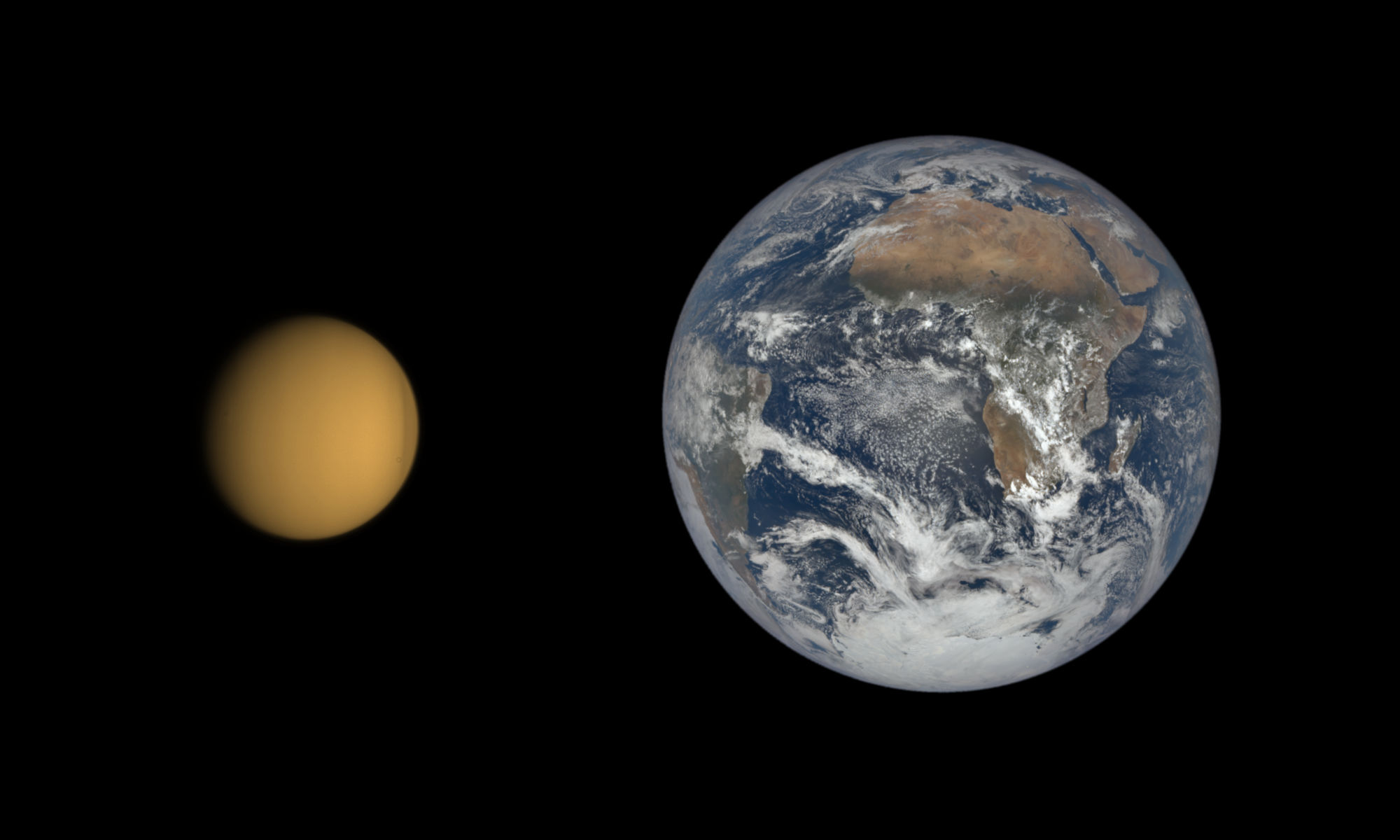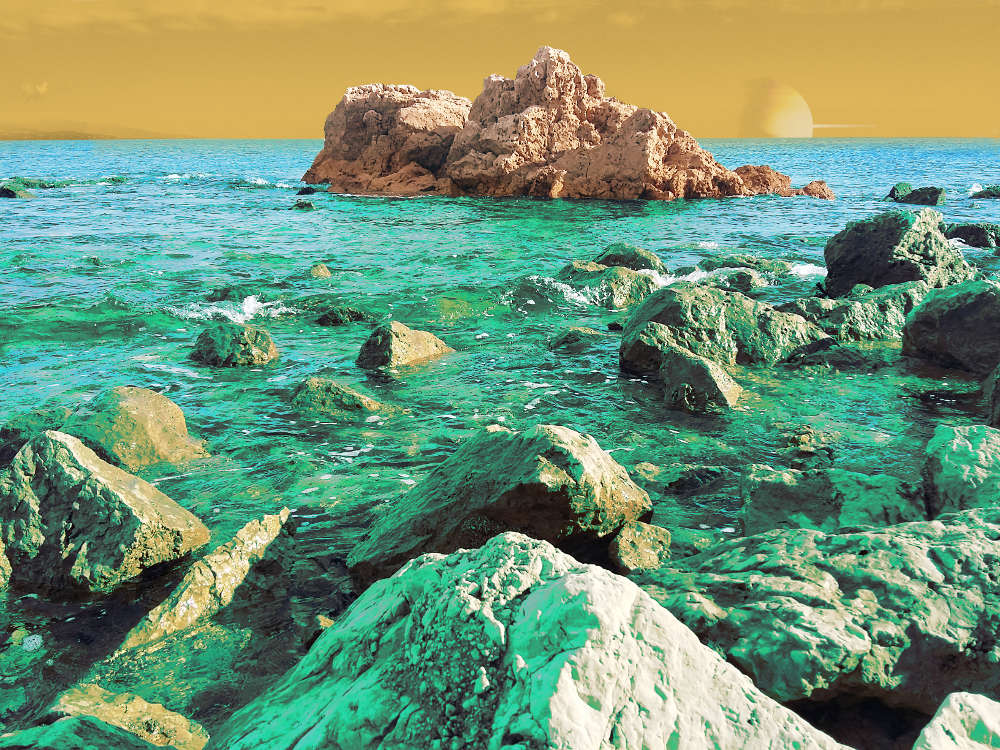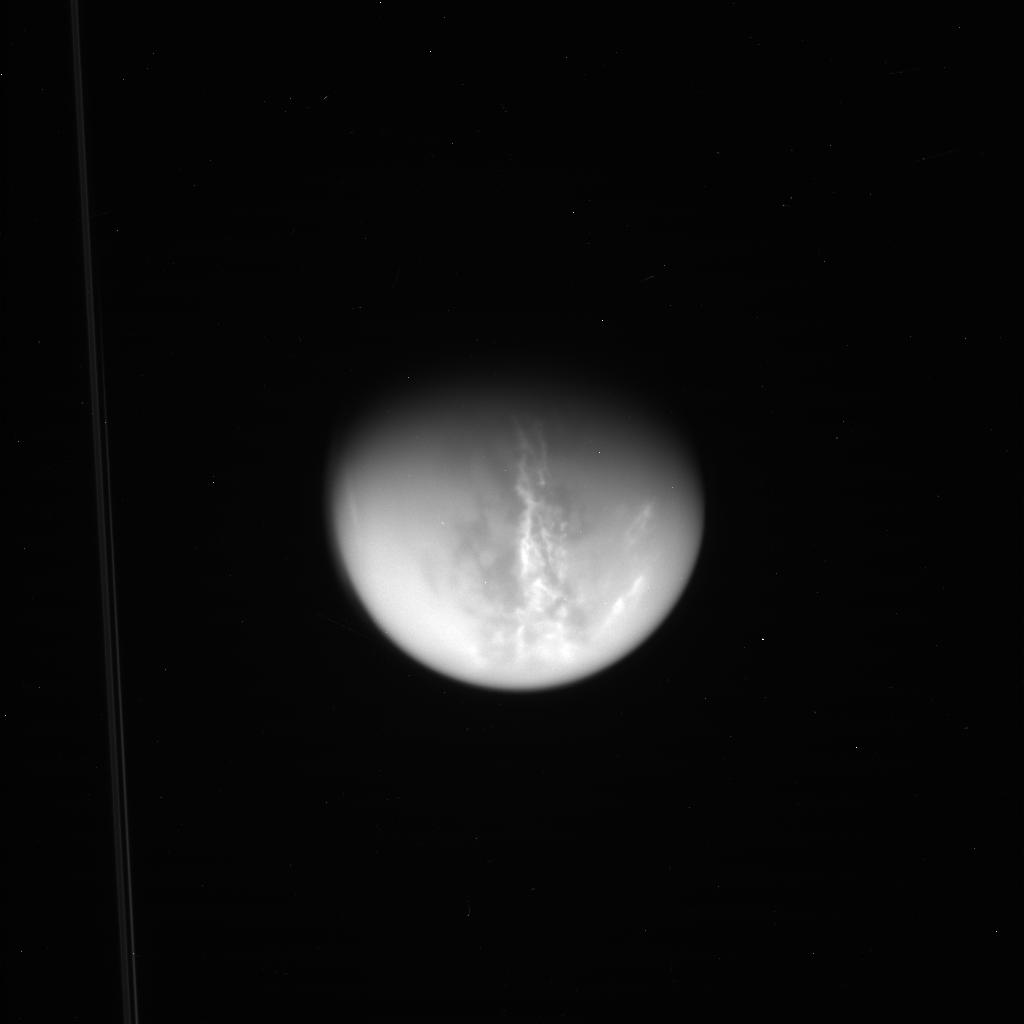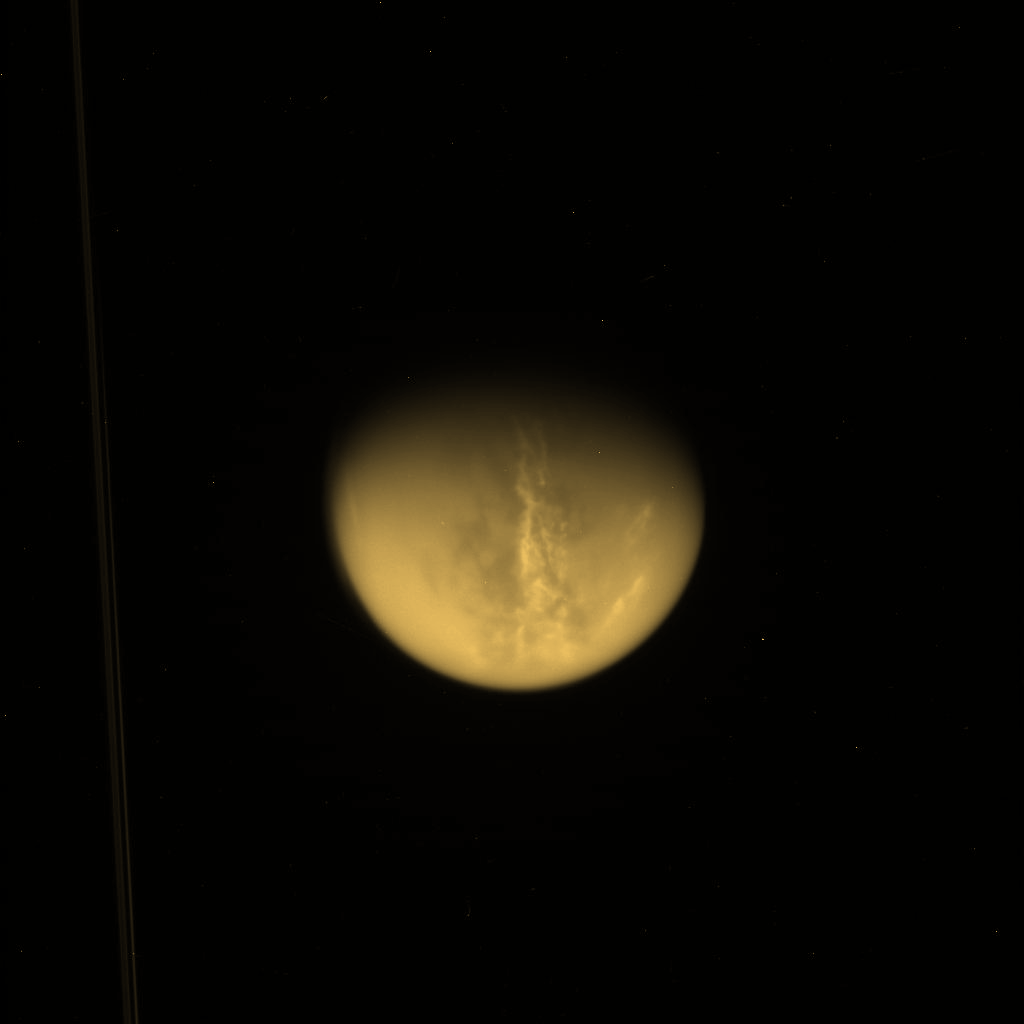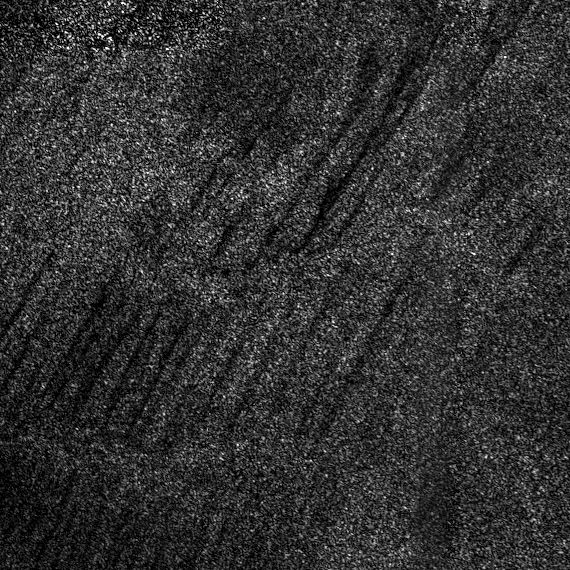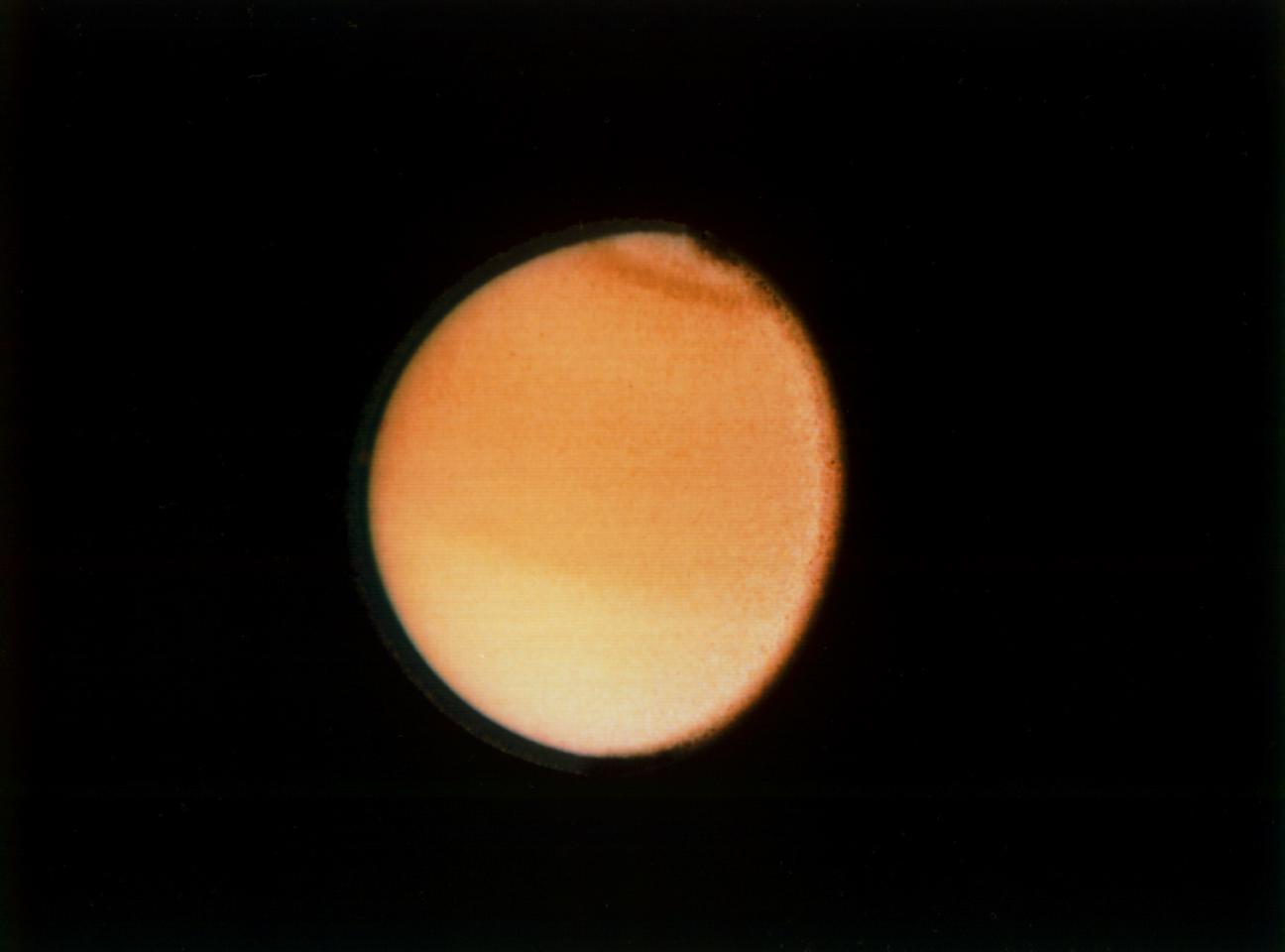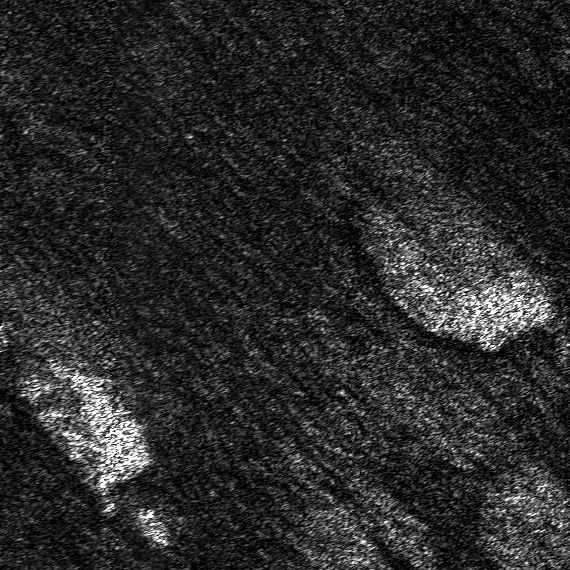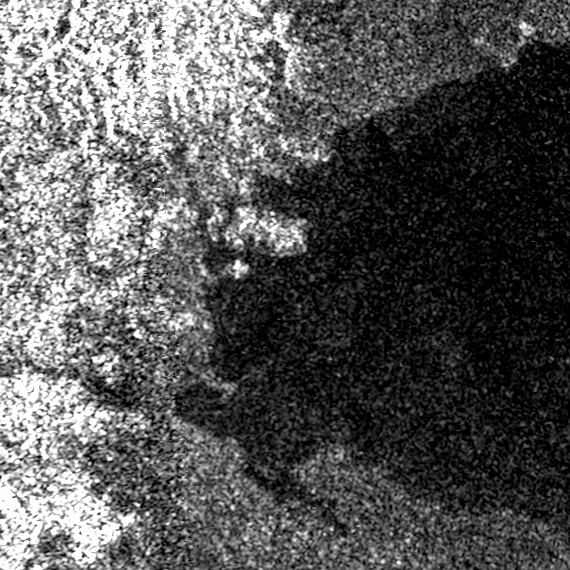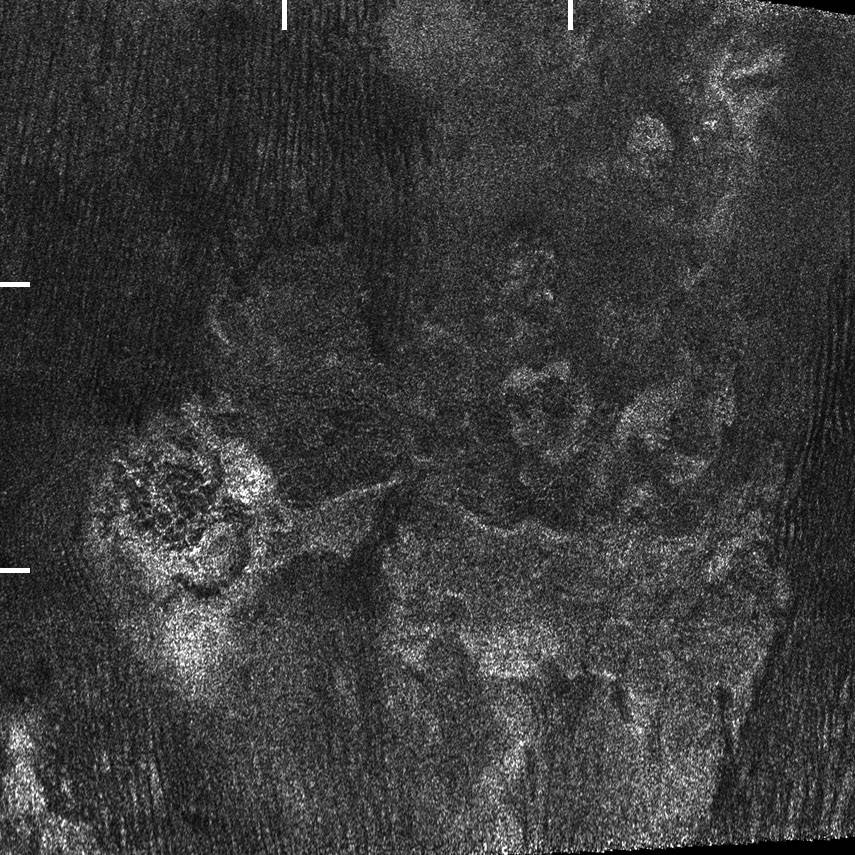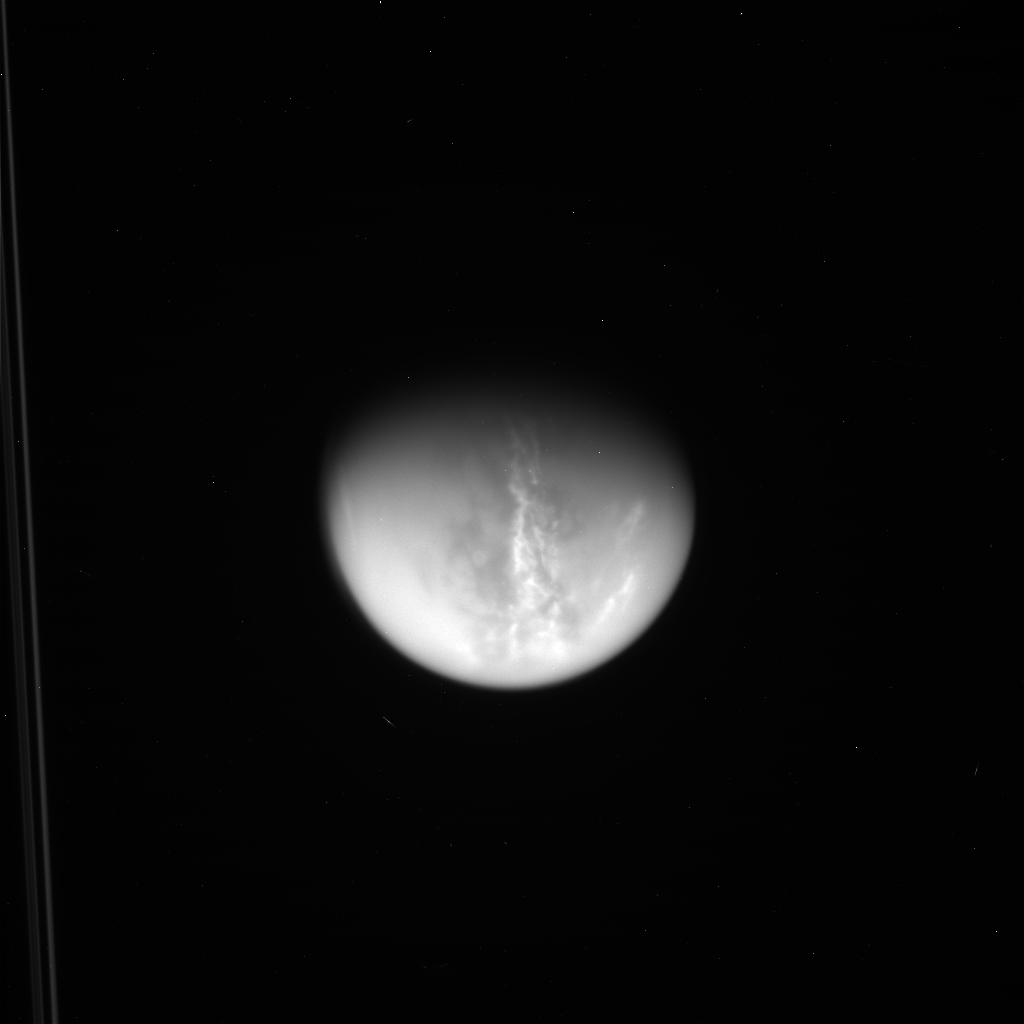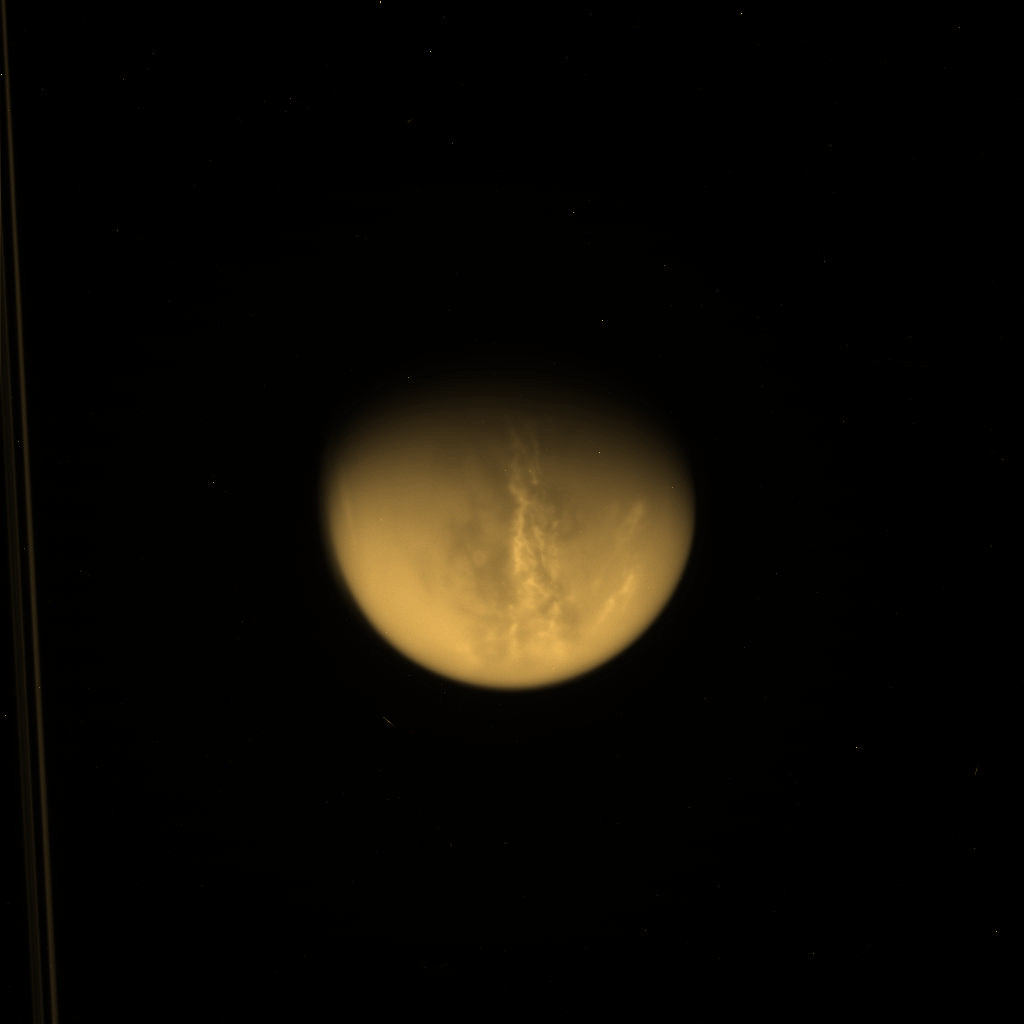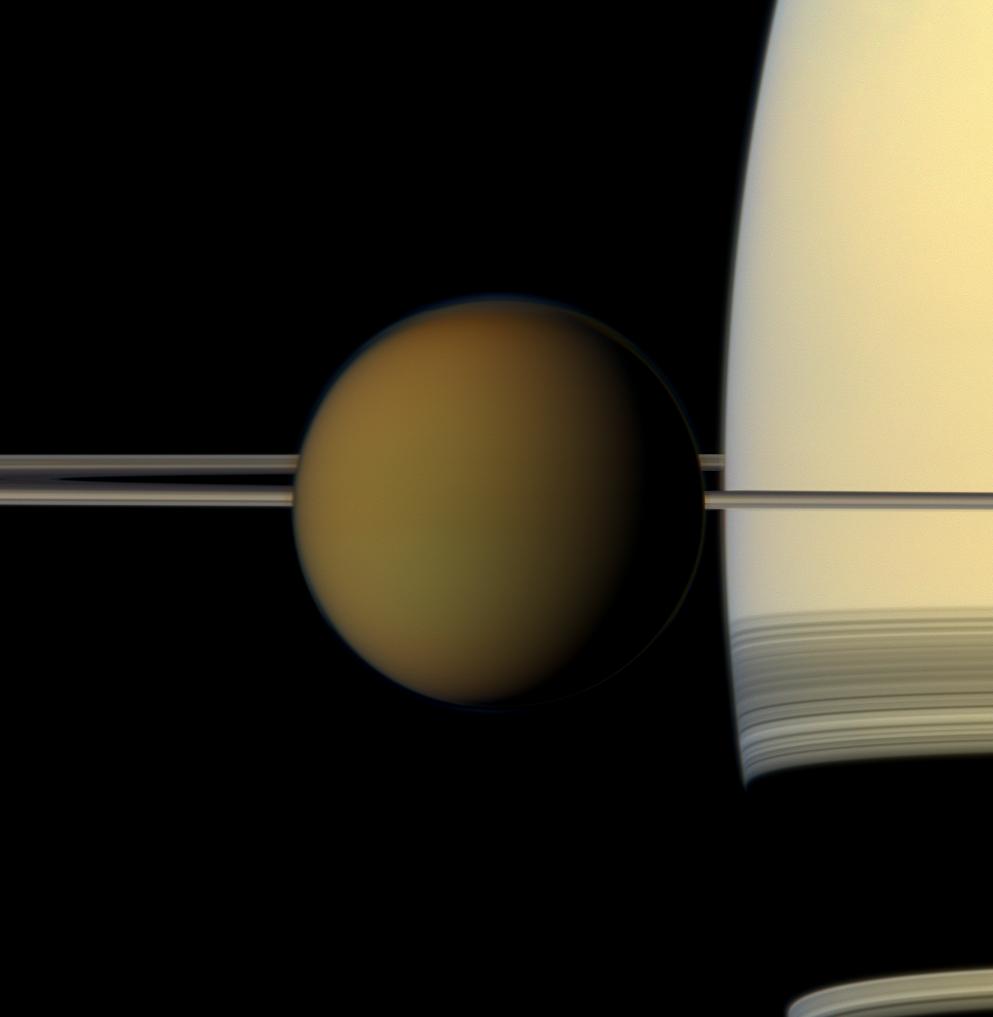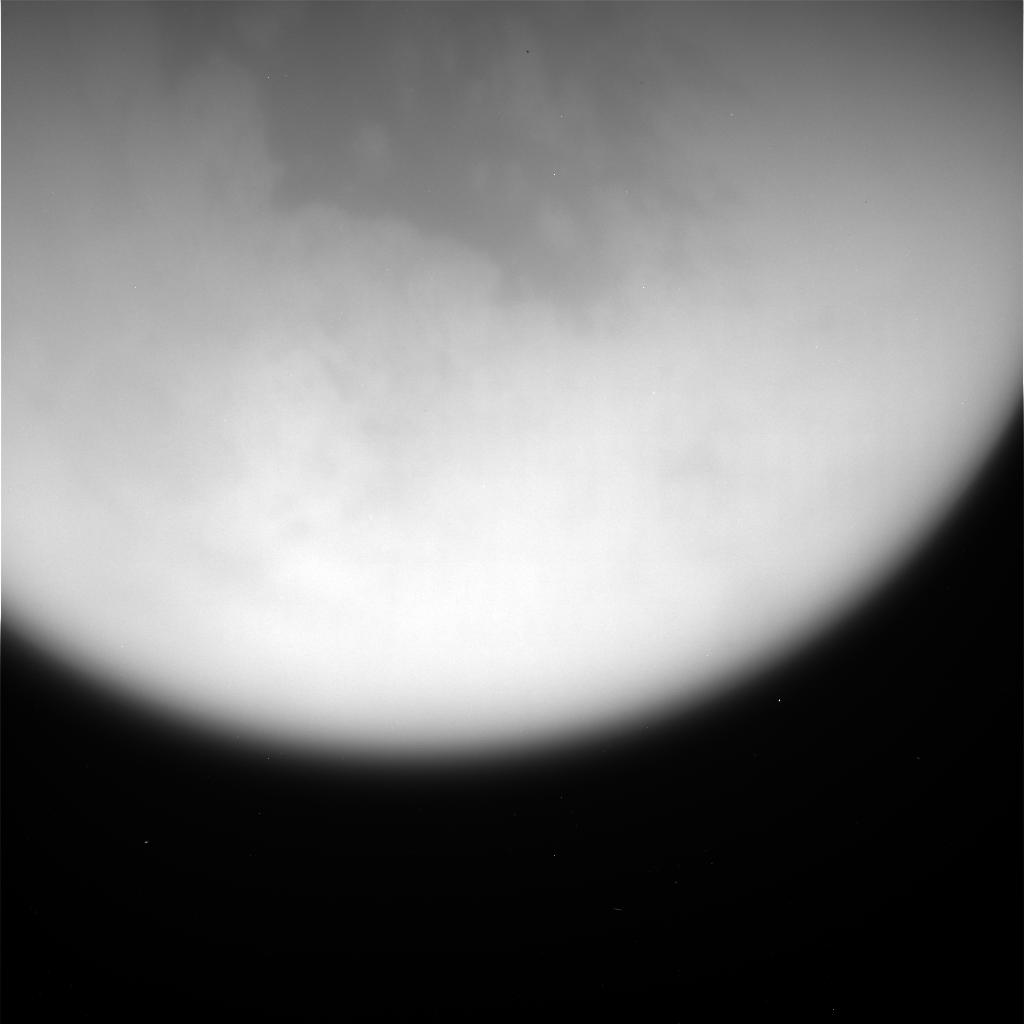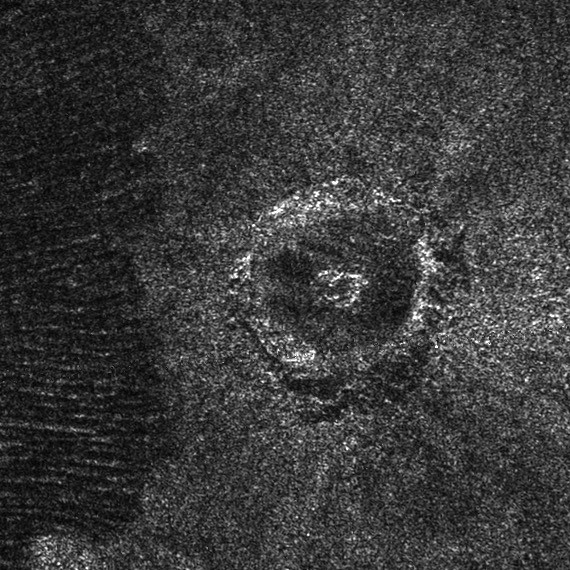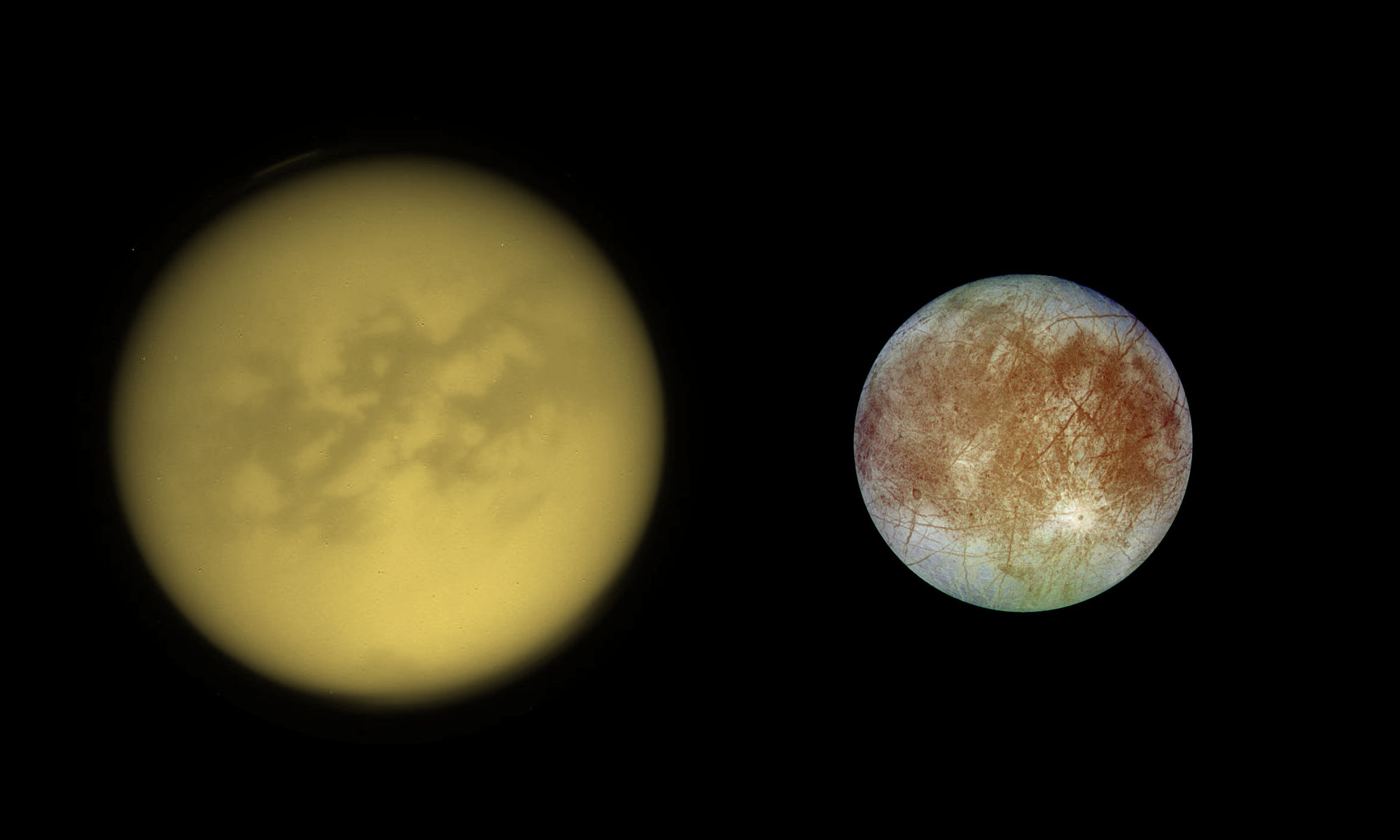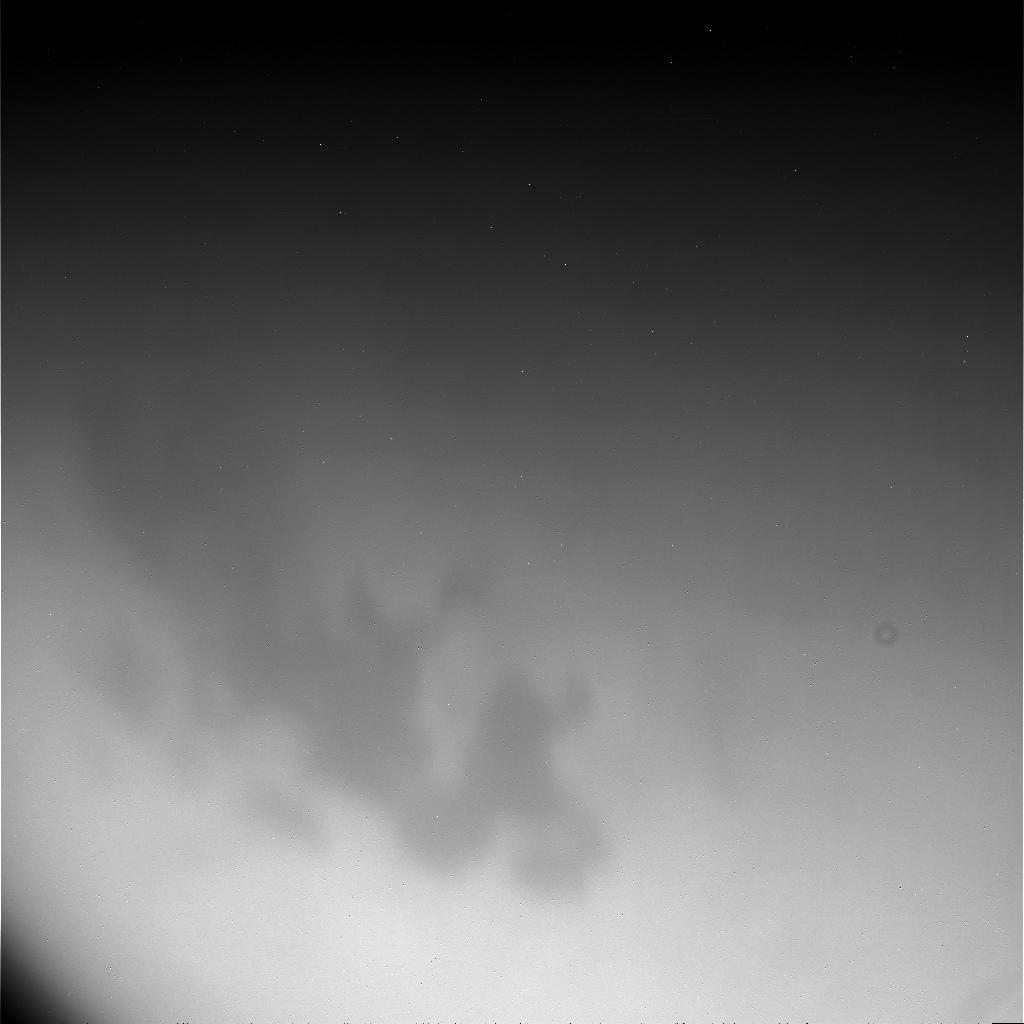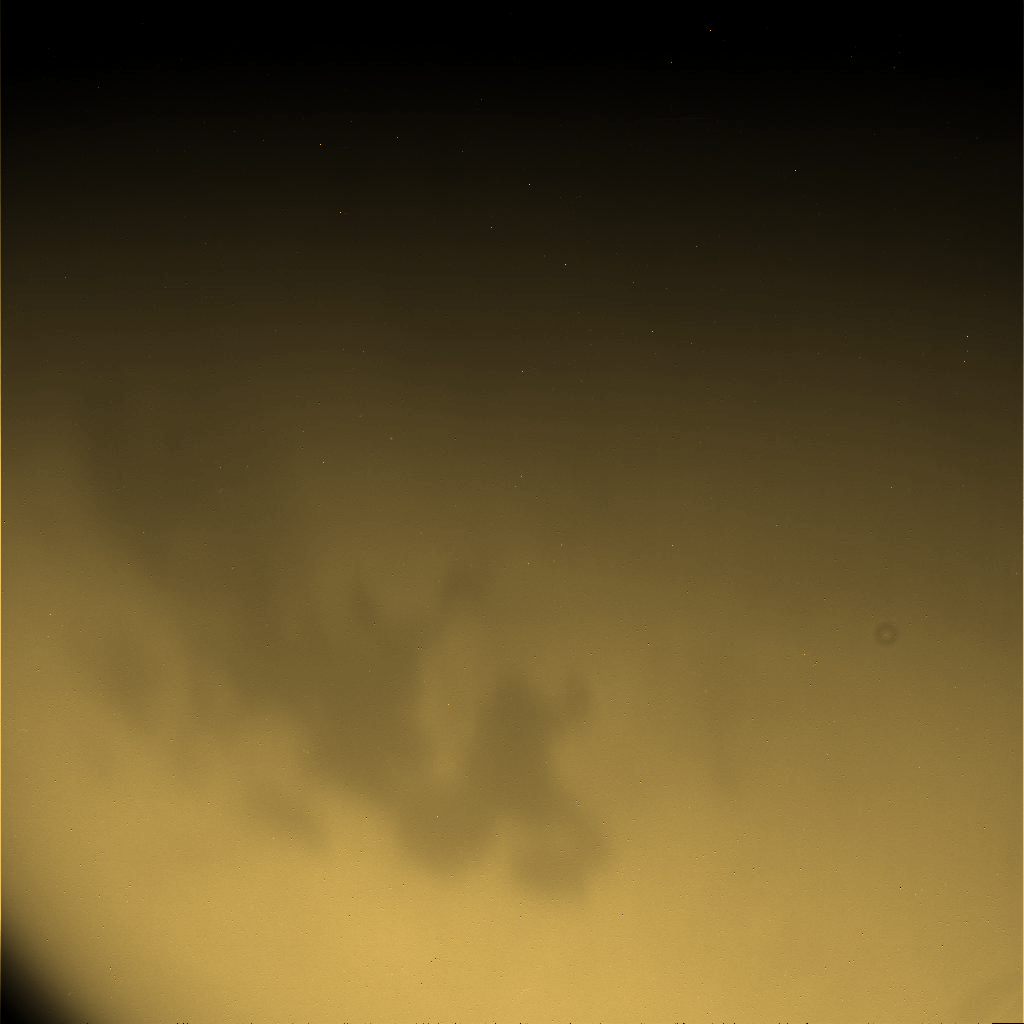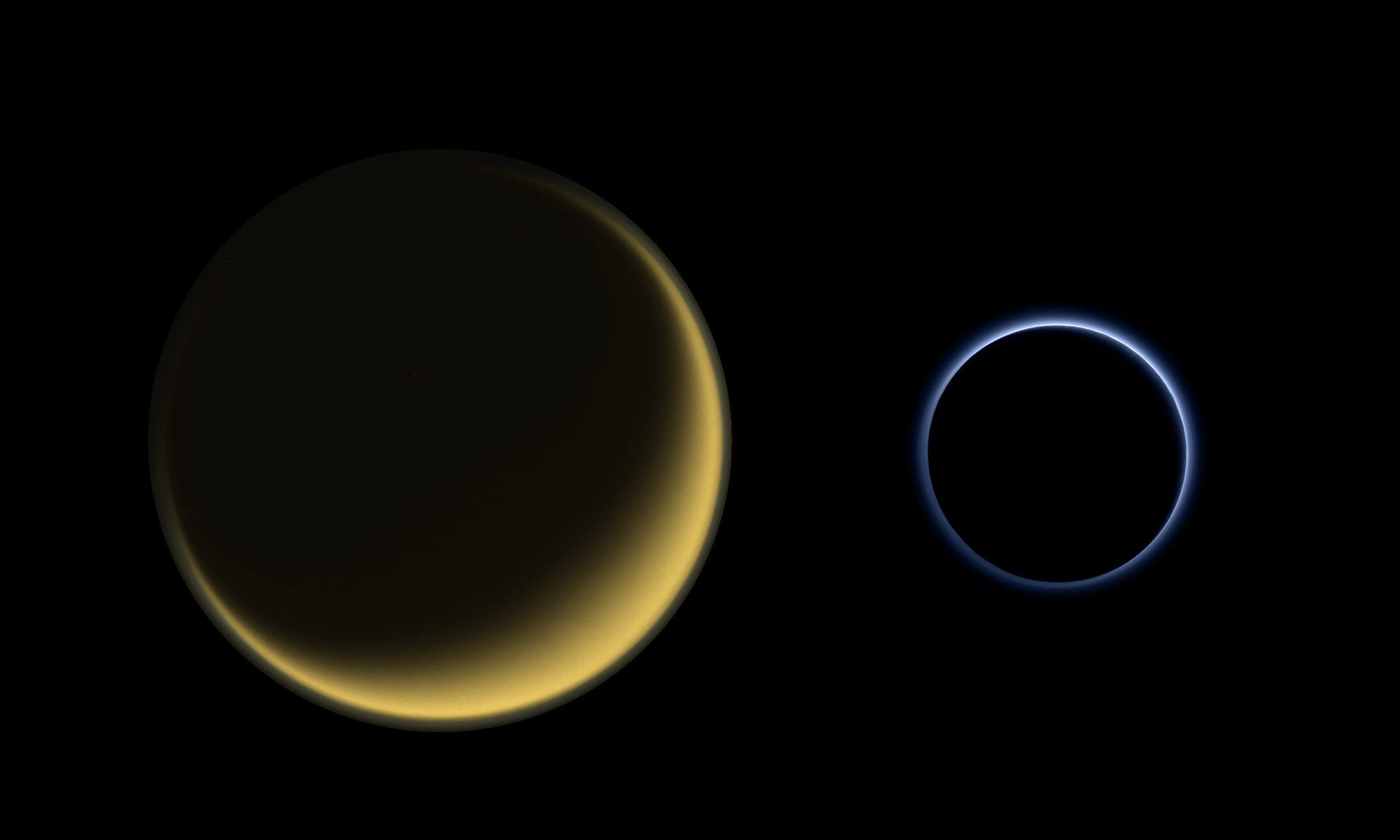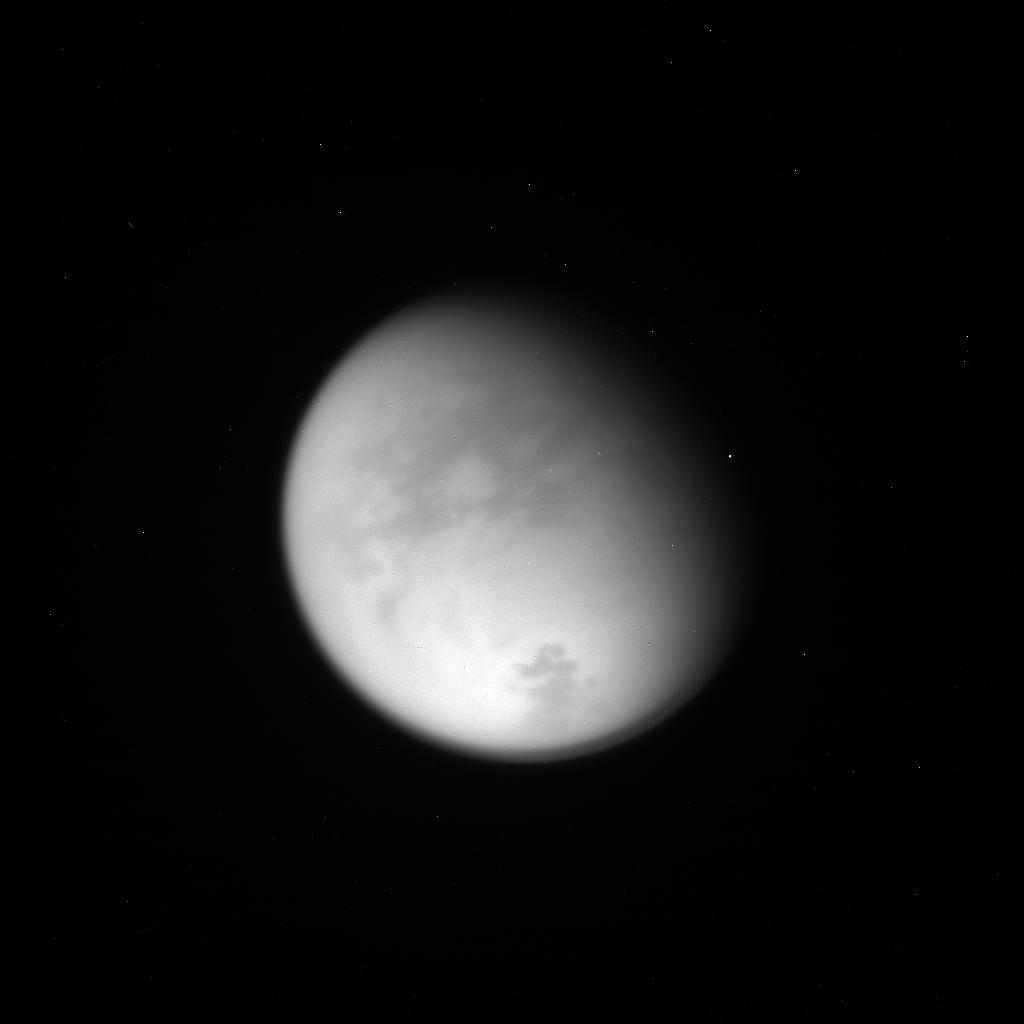Titan News 2021
December 31, 2021: What Are The Fundamental Differences Between Titan And The Earth ?
During the formation process of the Solar System, several planetary bodies have taken shape around our star The Sun. One can imagine a multitude of circumstellar disks from which the planets or moons we know today have progressively taken shape via accretion or aggregation processes. The Proto-Earth was probably devoid of any moon. The "Blue Planet" we know today is likely the outcome of a collision between the Proto-Earth and a planetary body around the size of Mars. The collision engendered the Moon and the Earth. The Moon is probably composed of a mixture of the planetary body that collided with the Proto-Earth and of the crust of the Proto-Earth. The core of the Moon is in fact relatively small compared to the core of the Earth. Heavier materials or elements tend to be found within the core. The core of the Earth is likely dominated by iron and nickel. The composition of any planetary body in the Solar System is closely linked to the distance or to the level of energy received from the Sun. In the Inner Solar System, the planets appear to be rocky worlds. In the Outer Solar System, the planets represent Gas Giants and tend to be dominated by hydrogen and helium. Their moons like Europa, Titan or Enceladus tend to be icy or rocky worlds.
Around Jupiter, the largest planet in the Solar System, there are four major moons which appear relatively different from each other. Io is the most volcanically active world in the Solar System and looks like a pizza to a certain extent. Europa appears remarkably icy with a multitude of fractures. Some researchers advance that Europa may contain a subsurface ocean dominated by liquid water. Ganymede which is the largest moon in the Solar System appears quite different from Io and Europa. Ganymede looks like Europa to a certain extent because that world also contains a multitude of fractures but the surface appears less young or less dynamic at first sight. Callisto appears older than Ganymede because that moon is heavily cratered. There are also several major moons around the Ringed Planet Saturn which is the second largest Gas Giant in the Solar System. One can mention Tethys, Dione, Rhea, Titan and Iapetus. Those moons may have taken shape during the formation process of Saturn. From Tethys, the closest moon to Saturn among those worlds, to Titan, the largest moon among those worlds, the size and the mass of the moon appear higher as we go away from Saturn up to the Orange Moon.
November 25, 2021: Exploring The Lakes Or Seas Of Titan With A Boat Or A Submarine Will Really Be A Major Challenge
There are two known worlds in the Solar System where stable lakes or seas can be found on the surface. Those worlds are the Earth and Titan. The lakes, seas or rivers of Saturn's largest moon Titan have never been observed from any in situ probe. Those lakes, seas or rivers have only been observed from the Cassini orbiter during its long mission in the Saturn System from 2004 to 2017. Thanks to that remarkable spacecraft, we have obtained radar data as well as infrared or near-infrared views of those pools or rivers. Curiously, the lakes, seas and rivers of the Opaque Moon are concentrated in its high latitudes. The lakes, seas or rivers of the giant moon of the Ringed Planet Saturn may appear familiar to us at first sight but they are in fact fundamentally different from the typical lakes, seas or rivers we regularly encounter on Earth. In the harsh environment of Titan where the ambient temperature at sea level evolves around minus 180 degrees Celsius, minus 292 degrees Fahrenheit or 93 Kelvin, water can't appear in its liquid form on the surface. Water will tend to be completely frozen on the surface. Pebbles dominated by water may be present at the bottom of the lakes, seas or rivers of that enigmatic world.
What is the exact composition of the lakes, seas and rivers of the Orange Moon ? That's a major question we must try to answer in order to develop a probe, a boat, a submarine or a drone that will be in a position to explore those exotic environments in the right way. We know that Titan's atmosphere is dominated by molecular nitrogen like the atmosphere of the Earth. We also know that the second most abundant compound present in Titan's atmosphere is methane or CH4. That's a major difference compared to the atmosphere of the Blue Planet that is extremely poor in methane. Oxygen is absent or almost absent in Titan's atmosphere. During the Cassini-Huygens mission in the Saturn System, we have clearly identified various cloud formations in the high latitudes or in the low or mid-latitudes. One can advance that the composition of the clouds and the composition of the lakes, seas or rivers are closely related. In other words, the composition of the clouds is likely to bring us clues regarding the potential composition of the lakes, seas or rivers of the giant moon. Titan is a world rich in hydrocarbons and organics. In the extremely cold environment encountered at sea level, several types of hydrocarbons can appear in their liquid form.
October 19, 2021: A New Study Suggests The Potential Presence Of Active Strike-Slip Faulting On Titan Due To Tidal Phenomena In Particular
A new research work entitled "Strike-slip faulting on Titan: Modeling tidal stresses and shear failure conditions due to pore fluid interactions", proposed by a team involving Liliane Burkhard and recently published in the journal Icarus suggests the potential presence of strike-slip faulting on Saturn's largest moon Titan due to tidal forces and due to a relatively humid crust. The crust of Titan can be relatively porous and humid in certain areas so that the crust can be relatively unstable. The researchers of the study reveal that the variations in the tidal forces from Saturn in particular during the eccentric orbit of the Opaque Moon around the Gas Giant can have a significant impact on the level of stability of Titan. Active deformation mechanisms can be envisaged. The presence of liquid methane or liquid ethane within the crust of Saturn's largest moon is likely to make it more fragile or to boost strike-slip faulting. Liquid methane or liquid ethane can infiltrate inside pores within the exotic crust. If the potential faults are found along the equatorial area with an east-west orientation, the crust can be more sensitive to tidal phenomena so that shear failure can take shape from time to time. Some fractures can be generated in the upper part of the external crust or inside the crust.
This study upon the potentially active tectonic activity of Titan was performed by a group of planetary scientists from the University of Hawai'i at Manoa School of Ocean and Earth Science and Technology (SOEST). The potential strike-slip faulting of the giant moon of Saturn can be encountered on Earth or on many other worlds in the Solar System. That's the case for Europa, a major moon of Jupiter, and that's also the case for Enceladus, a tiny moon of the Ringed Planet which appears remarkably bright. On Earth, strike-slip faulting can be observed in California, in the well-known San Andreas Fault. Several worlds located in the Outer Solar System are believed to contain oceans, seas, rivers or pockets of liquids like water, methane, ethane or ammonia beneath their external crust. That configuration may favor the presence of fractures on icy crusts. We keep in mind Europa and Enceladus which unveil fractured surfaces probably related to tidal phenomena and to a subsurface ocean rich in liquid water. Geysers have been clearly observed in the fractures of the south polar region of the icy moon Enceladus. That's a clear sign of cryovolcanism on a really small world.
Septembre 3, 2021: Some Researchers Develop A Model To Predict The Weather On Mars Or Titan For Any In Situ Mission
A new study entitled "Annular modes of variability in the atmospheres of Mars and Titan", published on August 30, 2021 in Nature Astronomy and proposed by J. Michael Battalio and Juan M. Lora shows that the annular modes are prominent in the atmospheres of the Red Planet Mars and the Opaque Moon Titan to explain their variability. The demonstration of the researchers from the Yale University was made possible thanks to the mobilization of data assimilation datasets for Mars and thanks to the mobilization of a general circulation model for Saturn's largest moon. The scientists demonstrate that annular modes in the atmosphere of Mars and Titan explain in a remarkable way the variability of those atmospheres compared to the configuration of Earth annular modes and the variability of our own atmosphere. One annular mode accounts for the latitudinal shift of the jet on the Red Planet and on our own planet and accounts for the vertical shifts of the jet on the Hazy Moon. Another annular mode accounts for pulses of mid-latitude eddy kinetic energy on Earth, Mars and Titan. The team of researchers shows that the annular mode which accounts for those pulses is efficient to anticipate regional dust activity on the Red Planet.
The annular mode which accounts for pulses of middle latitude eddy kinetic energy is likely to allow us to better understand the Martian weather. The planetologists observe that annular variability can be remarkably similar on different worlds which appear relatively dynamic. Can we apply those annular modes to anticipate the variability of the atmosphere of Venus for instance ? Can we apply those annular modes to the variability of the atmosphere of potential exoplanets ? If planetologists can predict the weather of Venus, Mars or Titan in the coming days, any in situ mission to the surface of those worlds which can mobilize a probe, a drone, a plane, a boat or a submarine will be more likely to be successful. We will be in a position to avoid any potential dust storm event or any potential rainfall event. On Mars, dust storms can appear in a particular area or can become global. We've lost the Opportunity probe due to a global dust storm that prevented the solar panels to fuel the battery. On Titan, the weather can potentially be very bad as well with heavy rainfall events involving methane or ethane. Engineers and scientists are already planning a new mission known as Dragonfly in the low or middle latitudes of Saturn's largest moon in the 2030s.
August 27, 2021: A Team Of Researchers Simulates The Potential Mineralogy Of Titan By Mobilizing Molecules Like Acetonitrile And Propionitrile In Laboratory Experiments
A new research work entitled "Titan in a Test Tube: Organic Co-crystals and Implications for Titan Mineralogy", published by American Chemical Society and proposed by a team involving Morgan L. Cable and Tomce Runcevski reveals the potential mineralogy of Saturn's largest moon Titan. The outcome of the analytical work is presented at the fall meeting of the American Chemical Society (ACS). That meeting represents ACS Fall 2021. The researchers performed laboratory experiments involving some molecules or elements potentially present in the atmosphere and on the surface of the Orange Moon. They studied the properties of several molecules that may be present in the haze and on the surface of the giant moon. They resorted to small glass cylinders in order to recreate the potential environment of Titan. They mobilized particular molecules that are believed to be part of the mineralogy of that opaque world. They focused their attention on acetonitrile (ACN) and propionitrile (PCN). The chemical formula of acetonitrile is CH3CN whereas the chemical formula of propionitrile is CH3CH2CN. Both molecules contain the carbon element, the hydrogen element and the nitrogen element.
As Tomce Runcevski who is the project's principal investigator pointed out, the extremely harsh environment of Titan where the ambient temperature at the level of the surface is around -179 degrees Celsius, - 290 degrees Fahrenheit or 94 Kelvin allows simple organic molecules that appear in their liquid form on Earth to appear in the typical form of solid icy mineral crystals on Saturn's largest moon. The researcher who is Ph.D. also said that his team found two of the molecules that are probably widespread on the giant moon. Those particular molecules which are acetonitrile (ACN) and propionitrile (PCN) are predominantly found in one crystalline form that generates highly polar nano surfaces. Those structures could be mobilized for the self-assembly of other compounds of prebiotic interest. Titan appears to be the perfect place or world to study the chemistry of organics and hydrocarbons in a harsh environment where chemical reactions are particularly slow. The atmosphere of that moon is relatively rich in methane and methane can form clouds, fall as rain and generate rivers, lakes or seas. A parallel can be drawn between the water cycle on Earth and the methane cycle on Titan.
August 25, 2021: The Voyager Probes Revealed That Titan Had A Captivating Atmosphere In Particular
In 1979, the Pioneer 11 spacecraft performed a flyby of the Saturn System for the first time in history. That flyby allowed us to determine that Titan was probably too cold for the development of life despite the presence of methane or organics in its atmosphere. In 1980 and 1981, the Voyager 1 spacecraft and the Voyager 2 spacecraft also performed a flyby of the Saturn System. In 1980, the Voyager 1 spacecraft revealed an intriguing moon with a dense and opaque atmosphere that contained a relatively significant concentration of methane. The destiny in terms of planetary exploration for the Voyager 1 spacecraft ended with the close flyby of Saturn's largest moon since the trajectory completely left the plane of the orbit of Saturn around the Sun with an upward movement for an interstellar journey. Later, on August 25, 1981, 40 years ago, the Voyager 2 spacecraft also performed a flyby of the Saturn System and obtained new views of Saturn and some of its moons. The planetary destiny of the Voyager 2 spacecraft didn't end with the flyby of the Saturn System. The probe benefited from a relatively strong gravitational boost that allowed it to continue its journey toward Uranus and Neptune.
The views of Titan in particular really captivated the imagination of planetologists and encouraged them to prepare a new mission to Saturn and Titan in particular. Ed Stone, the leader of the Voyager missions, had noted that if the Voyager 1 spacecraft had not reached its goal regarding Titan, the Voyager 2 spacecraft would have performed a closer flyby of Titan and would have ended its planetary destiny with the flyby of the Saturn System. Today, Voyager 1 and Voyager 2 continue their journey in the Outer Solar System towards other stars. In August 2012, the Voyager 1 spacecraft officially entered into interstellar space whereas the Voyager 2 spacecraft officially entered into interstellar space much later on November 5, 2018. That's a really long trip since the Voyager 1 spacecraft and the Voyager 2 spacecraft had left our planet in 1977. We continue to collect scientific data from the Voyager 1 spacecraft and the Voyager 2 spacecraft. However, they don't capture any image of asteroids, comets or Dwarf Planets in their path. The level of energy of the probes is progressively decreasing. We acquire the scientific data regarding the environment of both probes thanks to NASA's Deep Space Network (DSN) on Earth.
August 11, 2021: Can There Be A Prebiotic Chemistry Or A Complex Chemistry In The Low Or Mid-Latitudes Of Titan ?
The Cassini spacecraft as well as the Huygens probe have allowed us to determine that the landscape of Titan is remarkably diverse. Saturn's largest moon is far from being a uniform world dominated by impact craters. Titan has a deep, thick and dense atmosphere that tends to act as a shield against the potential asteroids, meteorites or comets. That opaque atmosphere composed of a complex haze engenders the typical erosional processes that one can encounter on Venus, on Earth or on Mars. For instance, the radar views obtained from the Cassini orbiter have clearly revealed the presence of linear and parallel dunes extending over long distances in the low or mid-latitudes of the giant moon. The infrared or near-infrared views acquired from the Cassini spacecraft unveil a sharp contrast between relatively bright areas and relatively dark areas. The linear and parallel dunes which are reminiscent of the Seif Dunes in the Namib Desert on Earth in particular can be found in the relatively dark areas of the low or mid-latitudes. Prior to the Cassini-Huygens mission in the Saturn System, some planetologists had imagined that the relatively dark regions of the low or mid-latitudes might be seas or oceans dominated by methane and ethane.
The Huygens probe was going to land at a low latitude in the southern hemisphere of Titan. Was it going to land on a desert ? Was it going to land on a sea or ocean rich in hydrocarbons ? The parachuted descent took shape on January 14, 2005. A multitude of panoramic views was captured from the Huygens probe during that breathtaking dive. The views of the landscape during the parachuted descent unveiled bright hills marking a sharp contrast with a brown or dark plain. At first sight, some commentators had interpreted the brown or dark plain as a sea or ocean. But the view obtained from the surface clearly showed that the Huygens module had not landed on a sea or ocean. However, the presence of eroded stones or pebbles in the field of view implies that the probe may have landed on an ancient river, brook or stream. The aerial views have clearly shown striking landscape features in the bright hills. A network of dark channels can be identified in those hills. That network of dark channels likely corresponds to a network of drainage channels closely related to meteorological phenomena. At the time of the observation, the dark channels were probably completely empty or dry.
July 3, 2021: Can Liquid Methane Engender A Prebiotic Chemistry Or A Biological Chemistry On Titan ?
Most worlds in the Solar System are devoid of any significant atmosphere. Therefore, those worlds can't contain any stable pool of liquid on their surface because there is not the right combination of surface pressure and environmental temperature at the level of the surface. Mercury which is the nearest world to the Sun is devoid of any atmosphere so that the stable presence of liquid water can't be envisaged on its surface. Mercury is not massive enough and too warm at the level of the surface to retain any atmosphere. Thus, today, Mercury appears as a dry world that is heavily cratered. By contrast, Venus which is the second largest Terrestrial planet in the Solar System contains a thick atmosphere because that planet is massive enough to retain an atmosphere even if the energy received from the Sun at the level of Venus is higher than at the level of the Earth. The environmental temperature of Venus appears much too high to allow the presence of lakes, seas or rivers of liquid water on its surface. The atmospheric pressure on the surface of Mars is too low to allow the stable presence of liquid water and the environmental temperature at the level of the surface of the Red Planet is rarely above 0 degree Celsius, 32 degrees Fahrenheit or 273 Kelvin.
Several worlds in the Solar System are believed to contain lakes, seas, oceans or rivers of liquid water but the Earth appears to be the only world in the Solar System to contain lakes, seas, oceans or rivers of liquid water on its surface. Several icy moons found in the Outer Solar System are thought to contain pockets or a subsurface layer of liquid water beneath their external crust. That's the case for Europa, one of the main moons of Jupiter. That's also the case for Enceladus, a bright and icy moon of Saturn where geysers or cryovolcanoes have been identified in the fractures of its south polar region. In fact, several moons of Saturn may contain a subsurface ocean dominated by liquid water. One can mention Mimas, Tethys, Dione, Rhea as well as the Opaque Moon Titan. The biosphere we know is intimately linked to liquid water. A lifeform based on liquid water likely implies the stable presence of lakes, seas, oceans or pools of liquid water. The Earth appears to be the only world in the Solar System containing that type of hydrosphere between the external crust and the atmosphere. Can life emerge and develop from another solvent than liquid water ? That question appears fundamental and we may find major clues regarding that question very soon thanks to the exotic environment of Saturn's largest moon Titan.
June 8, 2021: What Is The Closest World To Titan In Terms Of Nature Or Appearance In The Solar System ?
Planetologists often say that the environment of Titan, the largest moon of the Ringed Planet Saturn, looks like the environment of the Early Earth to a certain extent. Titan contains a significant atmosphere like the Earth. That's not the case for most moons of the Solar System. Our moon, The Moon, is devoid of any significant atmosphere. The Galilean Moons of Jupiter, Io, Europa, Ganymede and Callisto are also devoid of any significant atmosphere. Among the numerous moons orbiting Saturn, Titan is clearly the only moon containing a significant atmosphere. The atmospheric pressure on the surface of Titan is even higher than the atmospheric pressure on the surface of the Blue Planet at sea level. The moons of Uranus are also devoid of any significant atmosphere. Triton, the largest moon of Neptune, is in fact the only other moon in the Solar System to contain a visible atmosphere. However, that atmosphere is particularly thin since the atmospheric pressure on the surface of Triton is much lower than the atmospheric pressure on the surface of Mars for instance. Charon, the largest moon of Pluto, is devoid of any significant atmosphere as well. Surprisingly, Pluto which represents a Dwarf Planet and which is much smaller than Ganymede or Titan contains a thin atmosphere.
Among the Terrestrial worlds or the icy worlds of the Solar System, the worlds which are covered in a relatively significant atmosphere are quite rare. Mercury, the nearest world to the Sun, is devoid of any significant atmosphere for instance. Yet, the small planet Mercury is quite massive and is almost as big as Titan or Ganymede. Mercury may have had an atmosphere in the past but today that is not the case anymore. Mercury is dominated by impact craters like the Moon. One can notice that the mass and the level of energy received from the Sun play a key role for the stability of any atmosphere around a Terrestrial world or icy world. The likelihood for the presence of a significant atmosphere is higher if the world is heavier or more massive. The likelihood for the presence of a significant atmosphere is also higher if the distance between the Sun and the planet, the Dwarf Planet or the moon is higher. In fact, there must be the right combination of gravity and energy received from the Sun for the presence of a significant atmosphere. Venus, The Earth, Mars, Titan, Triton or Pluto appear to have the right combination of gravity and environmental temperature for the stable presence of any atmosphere around those worlds.
May 13, 2021: Could We Harness The Resources Of Titan In Any Complex Mission To That World ?
Titan, the largest moon of the Gas Giant Saturn, is a captivating world that looks like the Earth to a certain extent. That opaque or hazy world is clearly one of the key targets of NASA in terms of exploration. Titan has all the ingredients to draw the attention of planetologists, exobiologists or meteorologists. That natural satellite of the Ringed Planet contains a relatively significant atmosphere, dune fields extending over long distances or lakes, seas and rivers in its high latitudes. In a way, Titan represents a natural laboratory to study the chemistry of organics and hydrocarbons or to study the potential prebiotic chemistry. The Cassini-Huygens mission in the Saturn System has allowed us to gather a huge amount of data regarding the complex environment of Saturn's largest moon. We have noticed that Titan is a dynamic world where erosion processes generated by rainfall events, rivers, lakes, seas or winds can be identified. Some researchers advance that the atmosphere of Titan looks like the atmosphere of the Early Earth. The atmosphere of Saturn's largest moon is dominated by molecular nitrogen like the atmosphere of the Earth but the atmosphere of Titan also contains a relatively significant fraction of methane.
Oxygen is absent or almost absent in the atmosphere of Titan. That's a major difference between the atmosphere of Titan and the atmosphere of the Earth since the atmosphere of the Earth contains around 21 percent of oxygen. The molecules of oxygen present in our atmosphere are mainly related to our biosphere. In the harsh environment of the Opaque Moon, a molecule like carbon dioxide or CO2 will tend to appear in its solid form. That's also the case for water that will tend to appear in the form of ice on the surface or in the soil. The Huygens probe had landed onto the surface of Titan at a low latitude on January 14, 2005 and had recorded an ambient temperature of about minus 179 degrees Celsius, minus 290 degrees Fahrenheit or 94 Kelvin at the level of the surface. Therefore, the environment is extremely harsh and allows molecules like methane (CH4) or ethane (C2H6) to appear in their liquid form on the surface. Methane is in fact the second most abundant gas in Titan's atmosphere. A parallel can be drawn between the meteorological cycle of the Earth mobilizing water and the meteorological cycle of Titan mobilizing methane.
May 1, 2021: Titan May Contain Active Volcanoes Like Many Worlds In The Solar System
Saturn's largest moon Titan appears to be a captivating world which looks like the Earth to a certain extent. The Cassini spacecraft as well as the Huygens probe have revealed a dynamic world unveiling seas, lakes or rivers. The infrared or near-infrared views of the giant moon obtained during the orbital dance of the Cassini orbiter during the long Cassini mission in the Saturn System have clearly revealed the presence of dynamic meteorological processes such as cloud systems or cyclones. The clouds of that enigmatic world can engender rainfall events. The rain of Titan which falls relatively slowly to the surface due to the relatively low gravity can be composed of methane or ethane. Methane and ethane can be present in their liquid form on the surface in a relatively stable way. Planetologists can draw a parallel between the meteorological cycle of Titan based on liquid methane and the meteorological cycle of the Earth based on liquid water. There may also be internal sources to the relatively high concentration of methane in the Titanian atmosphere. Are there topographic fractures, geysers or cryovolcanoes where methane molecules or ethane molecules erupt ?
The radar views or the infrared or near-infrared views acquired from the Cassini orbiter during its long mission in the Saturn System from 2004 to 2017 have clearly revealed circular features, potential calderas, fractures, mountains or potential cryovolcanoes on Titan. However, it appears difficult to conclude that there are active cryovolcanoes on the Opaque Moon today. Planetologists have identified several topographic features which may represent cryovolcanoes on that world where the environmental temperature at the level of the surface oscillates around minus 179 degrees Celsius, minus 290 degrees Fahrenheit or 94 Kelvin. Sotra Patera and Doom Mons are among the potential cryovolcanic features identified on Saturn's largest moon today. Sotra Patera is a large depression that may represent a caldera. Doom Mons is a relatively circular mountain that may correspond to a cryovolcano. The structure reveals two peaks and a multitude of craters. One peak is approximately 1,000 meters high (About 1 kilometer high or about 0.62 mile high) and the other one is approximately 1,450 meters high (About 1.45 kilometers high or about 0.9 mile high). The deepest crater appears to be Sotra Patera with a depth of about 1,700 meters (About 1.7 kilometers or about 1.06 miles).
April 11, 2021: How To Interpret The Absence Of Bottom Echo In Kraken Mare Determined From The Cassini Radar Altimeter Data ?
A recent study has revealed that Kraken Mare may be remarkably deep thanks to data obtained from the Cassini orbiter on the basis of the Radar Altimeter. In fact, Kraken Mare which represents the largest sea on Saturn's largest moon Titan may be several hundred meters deep or around 1,000 feet deep. A new analysis entitled "The Challenging Depths of Titan's Seas", published in the Journal of Geophysical Research: Planets on April 9, 2021 and proposed by Ralph D. Lorenz brings us key information to interpret the absence of bottom echo in Kraken Mare. Several hypotheses can be advanced to try to explain the phenomenon. In the first hypothesis, the absence of bottom echo implies that the sea appears too deep for the identification of a bottom echo. In the second hypothesis, the liquid of the lake contains a relatively significant fraction of ethane so that any radar signal will tend to be absorbed by the liquid. In the third hypothesis, the sea is very deep and contains a relatively significant fraction of ethane. Methane appears to be the main molecule of the seas, lakes or rivers on Titan but ethane and molecular nitrogen can also be present in relatively significant concentrations within the seas, lakes or rivers.
Planetologists believe that the seas, lakes or rivers on the Opaque Moon Titan contain a mixture of methane, ethane and molecular nitrogen. The composition of that mixture can vary depending on the latitude, the area or the season. Methane can be compared to water on Earth since it is the key molecule of the meteorological cycle of Titan. Like water on Earth, methane on Titan can evaporate, form clouds or fall as rain. Methane whose chemical composition is CH4 may be particularly volatile on Titan. Ethane whose chemical formula is C2H6 may be less volatile than methane and may be comparable to salt on Earth. Ethane on Titan must represent a substance that tends to remain in the bed of any sea, lake or river even if the evaporation process of methane is relatively strong. Some ancient seas on Earth have kept their salt over time. Ethane may follow the same logic on Titan as salt on the Blue Planet. The mysterious seas, lakes and rivers of Titan must be remarkably diverse. Researchers try to gather new clues regarding those liquid bodies on the basis of the huge amount of data acquired from the Huygens probe on January 14, 2005 and acquired from the Cassini spacecraft during its long mission in the Saturn System, from 2004 to 2017.
April 8, 2021: A New Study Involving Kaitlyn Loftus Reveals That The Size Of Alien Raindrops Like The Raindrops On Titan May Be Relatively Similar To The Size Of Typical Raindrops On Earth
A new study entitled "The Physics of Falling Raindrops in Diverse Planetary Atmospheres", published in AGU's Journal of Geophysical Research: Planets on March 15, 2021 and involving Kaitlyn Loftus and Robin Wordsworth reveals that the various raindrops potentially encountered on other worlds in the Solar System or beyond are relatively similar in terms of size. A raindrop must be big enough to reach the surface of any planet or moon. If that raindrop is too big, it will tend to break up into smaller raindrops. Obviously, any atmosphere has its particularities. For instance, the atmosphere of Titan is dominated by molecular nitrogen like the atmosphere of the Earth but it contains a relatively significant concentration of methane, a molecule that is relatively scarce in the atmosphere of the Earth. In the harsh environment of Titan, methane can form clouds which can engender rainfall events like on Earth. Planetologists try to imagine or anticipate the characteristics of raindrops on Titan. The new research work makes things clearer regarding the physics, the dynamics or the chemistry of raindrops on other worlds like Jupiter, Saturn, Titan, Uranus or Neptune. Theories, simulations or models are likely to tell us a lot regarding the potential reality of other worlds.
In order to anticipate or determine the behavior of raindrops, we must understand fluid dynamics and thermodynamics. The physics of raindrops can be applied to raindrops of water in our own atmosphere, raindrops of methane in the atmosphere of Saturn's largest moon Titan, raindrops of sulfuric acid in the atmosphere of Venus, raindrops of helium in the atmosphere of Jupiter, raindrops of pure carbon in the form of diamonds in the atmosphere of Neptune or even raindrops of iron or quartz on potential exoplanets where the environmental temperature is extremely high. On the Red Planet Mars, raindrops of water can't be encountered but snowfall events involving carbon dioxide or dry ice can take shape. On the Gas Giant Jupiter, mushy ammonia hailstones can potentially fall. The researchers show that the raindrop size in any atmosphere will imply a particular shape of the raindrop, a particular terminal velocity of the raindrop and a particular evaporation rate of the raindrop. In other words, the planetologists are in a position to determine these three characteristics of the raindrop on the basis of its initial size. Will the raindrop released by the cloud reach the surface on the basis of its size, on the basis of its evaporation rate or on the basis of its speed ?
March 19, 2021: A New Study Suggests That Enceladus And Titan May Have Taken Shape Much Farther From Saturn Than Their Current Orbit
A new research work entitled "Formation Conditions of Titan's and Enceladus's Building Blocks in Saturn's Circumplanetary Disk", published in The Planetary Science Journal on March 12, 2021 and proposed by Sarah E. Anderson, Olivier Mousis and Thomas Ronnet reveals that Enceladus and Titan may have formed and developed in a circumplanetary disk that appeared much farther from Saturn than the orbit of Enceladus or Titan today. Enceladus is a tiny moon which evolves at a mean distance of 237,948 kilometers from the Ringed Planet Saturn whereas Titan is a giant moon which evolves much farther from Saturn at a mean distance of 1,221,870 kilometers from the Gas Giant. Mimas which is smaller than Enceladus evolves closer to Saturn than Enceladus. There are several major moons located between the orbit of Enceladus and the orbit of Titan. Those major moons are Tethys, Dione and Rhea. Rhea is bigger than Dione and Dione is bigger than Tethys. Thus, until the orbit of Titan, the moons tend to be bigger and bigger as we go away from the Ringed Planet. The orbit of Iapetus, another major moon of Saturn, is found much farther from Saturn than Titan. But Iapetus appears to be much smaller than Titan.
The new study shows that Enceladus and Titan may have formed and developed in a circumplanetary disk (CPD) that was not located at the level of their current orbit. That circumplanetary disk may have been found much farther from Saturn than the orbit of its largest moon Titan. The simulations proposed by the team of Sarah E. Anderson suggest that the disk may have had a radius representing a value found in the range between 66 Saturnian radii and 100 Saturnian radii. The mean radius of the second largest planet in the Solar System represents 58,232 km. Therefore, the lower limit of that presumed circumplanetary disk is equal to 3,843,312 km and the upper limit of that presumed circumplanetary disk is equal to 5,823,200 km. In any configuration of that CPD, the mean distance between that disk and Saturn is much higher than the mean distance between Titan and Saturn. Enceladus and Titan are thought to have formed and developed long ago in the period of the formation of the Solar System. The Solar System formed about 4.6 billion years ago. The center of gravity of the Solar System became the Sun, the only star of the Solar System. A circumstellar disk gave birth to the planets we know today. Around most of those planets, smaller worlds or moons took shape as well.
March 4, 2021: Titan May Contain Several Types Of Lakes, Seas Or Oceans
Saturn's largest moon Titan represents the only world beyond the Earth, in the Solar System, known to harbor stable pools of liquids on its surface. That's why that giant moon of the Ringed Planet represents a key target in terms of exploration for planetologists. Some researchers and engineers are currently preparing Dragonfly, a new mission to Titan. The Dragonfly probe will be in a position to fly and to explore its environment when it lands on Titan in the 2030's. Thanks to the Cassini spacecraft and thanks to the Huygens probe, we have gathered a huge amount of data regarding the atmosphere, the surface, the chemistry or the upper layers of the Orange Moon. The long mission of the Cassini spacecraft and the intense mission of the Huygens probe have allowed us to better understand the exotic atmosphere of that icy world. We have become aware that Titan is really a complex world which can be compared to a puzzle. Researchers try to gather new clues in order to improve our level of understanding of Saturn's largest moon. Prior to the Cassini-Huygens mission, some researchers had imagined that there may be seas or oceans of methane or ethane in the harsh environment of the Opaque Moon. Was the Earth the only world in the Solar System to contain oceans ?
The Cassini-Huygens mission has brought us clear answers regarding the potential presence of stable lakes, seas, oceans or rivers on Saturn's largest moon. The radar views as well as the infrared or near-infrared views obtained from the Cassini orbiter have clearly shown that there are lakes, seas or rivers in the high latitudes of each hemisphere on the Opaque Moon. Researchers did not expect the surprising distribution of lakes, seas or rivers on that enigmatic world. The Huygens probe obtained, during its atmospheric descent on Titan on January 14, 2005, remarkable panoramic views unveiling a sharp contrast between relatively bright areas and relatively dark areas. One could clearly identify a network of dark drainage channels within the bright hills observed from the parachuted probe. One could also discern a dark or brown plain marking a sharp contrast with the bright hills. Some specialists or researchers had thought, on the basis of the black-and-white views, that the dark or brown plain was in fact a sea of liquid methane. The color view obtained from the surface clearly showed that the probe had not landed onto a sea or ocean. Was the area of the landing site an ancient sea or ocean ?
February 20, 2021: Some Researchers Characterize A New Form Of Ice That May Be Present Beneath The Surface Of Icy Worlds Like Europa Or Titan
A new study entitled "Structural characterization of ice XIX as the second polymorph related to ice VI", proposed by a group of researchers involving Thomas Loerting and published in the journal Nature Communications on February 18, 2021 reveals the discovery or the characterization of a new form of ice taking shape in environments undergoing extremely high pressures. The new form of ice is now known as ice XIX. Until now, scientists have been in a position to identify 19 ice polymorphs or 19 forms of ice. The typical ice that we regularly encounter on Earth unveils an hexagonal shape of oxygen atoms. The common hexagonal form of ice is characterized by hydrogen disorder and geometric frustration. The hydrogen atoms which are connected to the oxygen atoms of the hexagon tend to be disordered or tend to have irregular positions due to a relatively high dynamics. There are numerous configurations of the lattice at relatively high temperatures below the freezing point of water around minus 10 degrees Celsius. The ice we encounter on Earth is in fact a relatively dynamic molecular structure compared to the other forms of ice one can encounter in nature. The behavior of ice can significantly change if the environmental pressure is much higher.
In the Outer Solar System, the environmental conditions are likely to allow the presence of other forms of ice. The high pressures encountered in the atmosphere of Jupiter or Saturn are likely to allow the development of other types of molecules than what we usually encounter on Earth. Most moons of Saturn are extremely rich in water ice and at a certain depth, new types of water ice can potentially be found. Mimas, Enceladus, Tethys, Dione and Rhea are bright moons unveiling an external crust dominated by water ice. A world like Titan appears to be more varied than the other moons of the Ringed Planet Saturn but its external crust may also be rich in water ice. Therefore, those moons may unveil some forms of ice that can take shape in environments dominated by relatively high pressures. Even if most of the icy worlds found in the Outer Solar System are devoid of any significant atmosphere, some forms of ice like ice XIX can potentially be encountered beneath the surface of those worlds. The typical form of water ice may be widespread in the upper layer of icy worlds like Europa or Titan but at a relatively high depth beneath the surface of those moons, some exotic forms of water ice may be found due to relatively high pressures.
January 30, 2021: The Dragonfly Mission May Bring Us Major Clues Upon The Origin Of The Methane Present On The Opaque Moon Titan
Thanks to the Cassini-Huygens mission, our level of understanding of Titan's environment has significantly improved. However, many mysteries regarding Saturn's largest moon have emerged thanks to the analysis of the huge amount of data gathered by the Cassini orbiter or the Huygens probe. Remarkable panoramic images of Titan's surface had been acquired from the parachuted probe during its historic atmospheric descent on January 14, 2005. The color view obtained from the surface captures our imagination. The aerial views obtained from the Huygens probe had unveiled a familiar landscape composed of bright hills containing a network of dark drainage channels and composed of a brown or dark plain reminiscent of a dried up sea or lake. The journey of the Cassini orbiter ended on September 15, 2017 with the final plunge of the spacecraft into the atmosphere of the Ringed Planet Saturn. A new mission to Saturn's largest moon Titan is starting to take shape. That mission which involves Elizabeth Turtle of the Johns Hopkins University Applied Physics Laboratory, the Principal Investigator of the mission, is known as the Dragonfly mission. That challenge is very ambitious since the mission will mobilize a rotorcraft to explore the environment of the Opaque Moon.
The data gathered by the Dragonfly rotorcraft may allow us to better understand the various chemical reactions taking shape on the ground or in the dense air near the soil or in the troposphere of the Orange Moon. The mission may provide major clues to the habitability of Saturn's largest moon. Can the environment of Titan engender complex molecules, prebiotic molecules or some typical molecules mobilized by our biosphere ? The Dragonfly mission may allow us to get a clearer understanding of the complex chemistry of Titan. The Dragonfly mission is expected to last at least 32 months and may last longer if the probe or if the instruments continue to correctly work in the harsh environment of the giant moon where the level of energy received from the Sun is much lower than the level of energy received at the level of the Earth. The flying robot or the drone will represent an "8-bladed rotorcraft". That drone will evolve in an environment where the air is several times denser than the air on Earth at sea level and where the gravity is much lower than on Earth. Therefore, it will need less energy than on Earth to fly. In other words, the rotation speed of the rotor can be slower on Titan than on Earth.
January 23, 2021: Water Can Be Found In The Form Of Clathrate Hydrates On The Surface Of Titan And In The Form Of Ice On The Surface Of Europa According To A New Study
A new study entitled "On the Occurrence of Clathrate Hydrates in Extreme Conditions: Dissociation Pressures and Occupancies at Cryogenic Temperatures with Application to Planetary Systems", published on December 17, 2020 in The Planetary Science Journal and proposed by a team composed of Hideki Tanaka, Takuma Yagasaki and Masakazu Matsumoto reveals that water can form clathrate hydrates on the surface of Titan and can only form ice on the surface of Europa or Ganymede on the basis of theoretical models. The researchers from the Okayama University in Japan developed a statistical mechanics theory in order to predict or to determine the presence of clathrate hydrates on worlds found in the Outer Solar System where environmental temperatures are particularly low. Water is generally found in the form of ice on the surface of the Earth if the environmental temperature is around or below 0 degree Celsius, 32 degrees Fahrenheit or 273 Kelvin. But water can also form clathrate hydrates if the environmental temperature is sufficiently low and if there is the right combination of atmospheric pressure and environmental temperature. The planetologists of the study have been in a position to determine whether Pluto, Titan, Europa or Ganymede can contain clathrate hydrates on their surface.
The presence, the concentration or the amount of clathrate hydrates are likely to bring us major clues regarding the dynamics, the stability or the evolution of any atmosphere for a world where cryogenic temperatures are encountered in the environment. A clathrate hydrate represents a molecular cage which traps small gaseous molecules. Water can appear as a solid, as a liquid or as a gas on our planet but the molecule can also appear in the form of clathrate hydrates on icy bodies located beyond Mars, in the Outer Solar System. In fact, clathrate hydrates represent a particular type of crystalline solid which looks like the typical water ice we know on Earth. Water molecules are widespread in the Solar System. They can be present on the surface of comets, planets, Dwarf Planets or moons. The small water-based cages contain smaller molecules which allow the structure to keep its shape over time or which prevent the molecular cage from collapsing and from generating the typical water ice we regularly encounter on Earth. The key factors for the formation or for the development of clathrate hydrates are pressure and temperature. Numerous moons of the Outer Solar System are devoid of any atmosphere so that water will tend to form the typical ice we know rather than clathrate hydrates.
January 21, 2021 : A New Study Involving Valerio Poggiali Implies That The Depth Of Kraken Mare May Reach 1,000 Feet Near Its Center
A recent study entitled « The Bathymetry of Moray Sinus at Titan's Kraken Mare », published on December 4, 2020 in the Journal of Geophysical Research and proposed by a team involving Valerio Poggiali who is a research associate in Cornell Center for Astrophysics and Planetary Science (CCAPS), in the College of Arts and Sciences, suggests that the largest pool of liquids on Titan, Kraken Mare, may be 1,000 feet deep near its center. The determination of the amount of liquid methane present on Titan's surface or beneath the external crust can bring major clues upon the hydrology or the meteorology of Saturn's largest moon. Researchers have mobilized the Radar Mapper or the Radar Altimeter of the Cassini spacecraft in order to determine the depth of pools of liquids like Ligeia Mare and Kraken Mare. Kraken Mare, Ligeia Mare and Punga Mare appear to be the largest lakes or seas in the high latitudes of the northern hemisphere. The high latitudes of the northern hemisphere appear to be much more humid than the high latitudes of the southern hemisphere which appear much more humid than the low or mid-latitudes of the giant moon. The pools of liquids in the north polar region are likely dominated by methane.
Thanks to the low environmental temperature and thanks to the relatively high atmospheric pressure on Titan's surface, methane and ethane can appear in their liquid form on the surface. The atmosphere of Titan, dominated by molecular nitrogen, contains a relatively significant concentration of methane. That's why researchers have long imagined or anticipated the presence of liquid methane or liquid ethane on the surface of the Opaque Moon. Ontario Lacus was the first pool of liquids clearly identified on Titan. Later, the lakes, seas and rivers of the high latitudes of Titan's northern hemisphere were unveiled by the radar data or the infrared or near-infrared data acquired from the Cassini orbiter. Kraken Mare is by far the largest pool present on the external crust of Titan. Kraken Mare is not a pond because its maximum depth is relatively high. The team of Valerio Poggiali, composed of Alex Hayes, professor of astronomy and director of CCAPS, Jonathan Lunine, the David C. Duncan Professor in the Physical Sciences, and chair, Department of Astronomy, Marco Mastrogiuseppe, a former Cornell postdoctoral researcher who is now research associate at Sapienza University of Rome in Italy, Alice Le Gall from the Institut Universitaire de France, Paris and research associates Illeana Gomez-Leal and Daniel Lalich, advanced that Kraken Mare may be well suited for an exploration campaign led by a potential robotic submarine.
January 19, 2021 : The Icy Particles Of The Haze Of Pluto May Be Different From The Particles Of The Haze Of Titan According To A New Study Involving Panayotis Lavvas
A new research work entitled « A major ice component in Pluto's haze », published in the journal Nature Astronomy on December 21, 2020 and involving the planetary scientist Panayotis Lavvas from the University of Reims Champagne-Ardenne in France reveals that the icy particles encountered in the haze of the Dwarf Planet Pluto may be different from the particles encountered in the haze of Saturn's largest moon Titan. Titan, Triton and Pluto which are worlds located in the Outer Solar System unveil an atmosphere composed of molecular nitrogen, methane and carbon monoxide. The presence of any atmosphere appears to be closely related to the level of gravity and to the level of energy received from the Sun or to the environmental temperature. A world on which the environmental temperature is relatively low will have a higher probability to contain an atmosphere than a world on which the environmental temperature is relatively high. A world that is more massive than another world will also have a higher probability to contain an atmosphere than the lighter world or the less massive world. Titan reveals a completely opaque atmosphere due to the presence of a haze rich in organics or hydrocarbons.
Researchers are particularly interested in the dynamics, the nature and the chemical activity of Titan's haze because that haze can produce complex molecules via the interactions between the radiations generated by the Sun and the various particles, compounds, ions or molecules found in the haze. Planetologists have noticed that there is a complex photochemical activity in the upper atmosphere of the Orange Moon under the influence of ultraviolet light from the Sun. We can clearly notice the sharp contrast between the orange ball of Titan and the blue or purple upper layers of the deep and thick atmosphere. Relatively complex hydrocarbons or organics can take shape in the upper atmosphere of Titan thanks to the photochemical activity. The atmosphere of the largest moon of Neptune Triton and of the Dwarf Planet Pluto also contains a haze or hazes engendered by photochemical processes. N2, CH4 and CO are regularly identified on the surface or in the atmosphere of the worlds found in the Outer Solar System. The images captured by the New Horizons probe had clearly revealed a field of ice rich in nitrogen ice and carbon monoxide ice for instance. Methane ice had also been identified on Pluto's surface.
January 1, 2021 : A New Study Involving Scot C. R. Rafkin Reveals The High Complexity Of Air-Sea Interactions On Titan
A new research work proposed by Scot C. R. Rafkin and Alejandro Soto, recently published in the journal Icarus and entitled « Air-sea interactions on Titan: Lake evaporation, atmospheric circulation, and cloud formation » reveals the high complexity of the various interactions between the lakes or seas and the air on Saturn's largest moon Titan. Evaporation processes, condensation processes and precipitation processes can be encountered on the Opaque Moon like on Earth. A parallel can be drawn between the meteorology of Titan and the meteorology of the Earth even if the key molecule of the meteorological system is different. The meteorology of the Earth is dominated by water (H2O) whereas the meteorology of Titan is dominated by methane (CH4). The mean environmental temperature of the giant moon of the Gas Giant Saturn is much lower than the mean environmental temperature of the Earth so that water can't appear in its liquid form on the surface of Titan in the absence of hot spot. However, the mean environmental temperature of Titan allows the stable presence of liquid methane, liquid ethane or liquid propane on the surface. Thanks to the Cassini-Huygens mission, we know, now, that there are lakes, seas and rivers on Titan.
The lakes, seas or rivers of Titan tend to appear in the high latitudes of each hemisphere. Therefore, the clouds tend to be mostly found at a relatively high latitude of each hemisphere or in the polar areas. Planetologists try to determine the potential interactions between the lakes or seas and the exotic atmosphere. Titan's atmosphere is dominated by molecular nitrogen like our own atmosphere. However, the second most abundant gas of Titan's atmosphere is methane. Oxygen is absent or almost absent in the opaque atmosphere of Saturn's largest moon. Methane represents the key molecule of Titan's hydrology whereas water represents the key molecule of Earth's hydrology. Let's point out that the abundance of liquid methane on Titan's surface is relatively low compared to the abundance of liquid water on the surface of the Blue Planet. The group of researchers revealed the complex mechanisms of the evaporation process between the lakes and the air of the giant moon of the Ringed Planet. Evaporation is in fact governed by a complex process of thermodynamics and dynamics. The scientists also showed that a cold, stable marine layer regularly takes shape in the environment of the pools. The development of clouds on Titan implies special conditions. There may also be very small turbulent fluxes and relatively quiet winds.
Titan News 2020
Titan News 2019
Titan News 2018
Titan News 2017
Titan News 2016
Titan News 2015
Titan News 2014
Titan News 2013
Titan News 2012
Titan
News 2011
Titan
News 2010
Titan
News 2009
Titan News 2008
Titan
News 2007
Titan
News 2006
Titan News
2004, 2005
